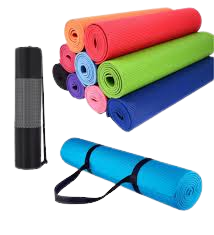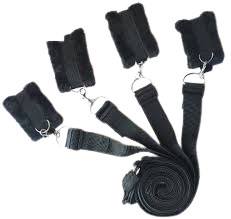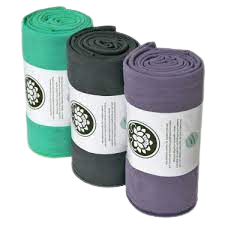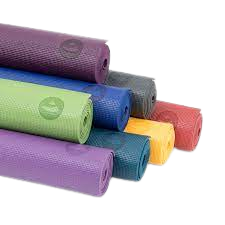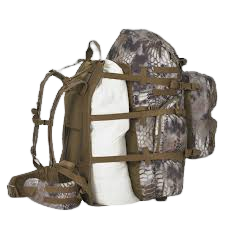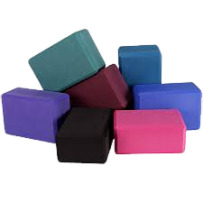The Ultimate Guide to Yoga Mat Thick: Finding Comfort, Support, and Mind Body Balance
Introduction
Yoga is a practice that not only engages the body but also the mind and spirit. For many practitioners, the yoga mat is a sacred space where the connection between mind, body, and the ground is established. One essential aspect of a yoga mat is its thickness. In recent years, thick yoga mats have gained popularity for their added comfort and support. In this comprehensive guide, we will explore the benefits of thick yoga mats, how to choose the right one for you, and the impact of mat thickness on your yoga practice.
-
The Evolution of Yoga Mat Thick
Yoga mats have come a long way since the practice originated thousands of years ago. Traditionally, practitioners would use animal skins or simple rugs to provide a barrier between their bodies and the ground. However, with the increasing popularity of yoga in the modern world, the need for specialized mats arose.
The first yoga mats were thin and primarily made of natural materials like cotton or jute. While these mats served their purpose, practitioners began to realize the importance of additional cushioning, especially during more extended and intense sessions. This realization led to the development of thicker yoga mats, which have since become a staple in yoga studios and homes worldwide.
Comfort and Joint Support
One of the primary advantages of using a thick yoga mat is the enhanced comfort it provides. The extra cushioning is particularly beneficial for individuals with joint sensitivities or those practicing on hard surfaces. The additional padding helps reduce pressure on joints like the knees, elbows, and wrists, making it more comfortable to hold poses for an extended period.
Improved Stability and Balance
Thicker yoga mats offer a more stable surface, promoting better balance during poses. This added stability is especially beneficial for beginners or those working on challenging balance poses. The increased thickness minimizes the chances of feeling wobbly or unsteady, allowing practitioners to focus on refining their alignment and deepening their practice.
Insulation from Cold Surfaces
Practicing yoga on cold surfaces can be uncomfortable and even distracting. Thick yoga mats act as insulation, providing a barrier between your body and the cold floor. This is particularly advantageous for those who practice in cooler environments or on unheated floors, ensuring a more pleasant and focused yoga experience.
Versatility for Various Styles
Different styles of yoga may require different levels of support and cushioning. While a thin mat might be suitable for a gentle Hatha practice, a thicker mat could be more appropriate for a vigorous Vinyasa flow or power yoga session. The versatility of thick yoga mats makes them a practical choice for individuals who engage in a variety of yoga styles.
Longevity and Durability
Thicker yoga mats often boast increased durability, making them a long term investment for your practice. The added thickness contributes to the mat’s resilience, reducing the wear Yoga Mat Thick and tear caused by regular use. This durability ensures that your mat remains a reliable companion throughout your yoga journey.
-
Choosing the Right Thickness
While thick yoga mats offer numerous benefits, it’s crucial to find the right thickness for your specific needs and preferences. The ideal thickness may vary based on Yoga Mat Thick factors such as your body weight, the type of yoga you practice, and any existing joint issues. Here’s a general guide to help you choose the right thickness
1/4 Inch (6mm)
- Suitable for most practitioners, providing a good balance of comfort and stability.
- Ideal for a wide range of yoga styles, including Hatha, Yin, and general fitness routines.
- Offers sufficient cushioning for joint support without compromising stability.

1/2 Inch (12mm)
- Recommended for individuals with joint sensitivities or those who practice on hard surfaces.
- Provides excellent cushioning for intense yoga styles like Ashtanga or power yoga.
- Ideal for individuals with existing joint issues seeking maximum comfort and support.
3/4 Inch (18mm) and Beyond
- Reserved for individuals with specific needs, such as severe joint problems or injuries.
- Offers maximum cushioning and support but may sacrifice some stability in certain poses.
- Generally not recommended for dynamic or balance intensive yoga styles.
Materials Matter
Apart from thickness, the material Yoga Mat Thick of the yoga mat is another crucial factor to consider. Different materials offer varying levels of grip, durability, and eco friendliness. Common materials for thick yoga mats include:
PVC (Polyvinyl Chloride)
- Provides excellent durability and grip.
- Affordable and widely available.
- Not the most environmentally friendly option.

TPE (Thermoplastic Elastomer)
- Eco friendly alternative to PVC.
- Offers good durability and cushioning.
- Generally biodegradable and recyclable.
Natural Rubber
- Provides excellent grip, especially when wet.
- Eco friendly and biodegradable.
- May have a rubber smell initially.
Cork
- Naturally antimicrobial and hypoallergenic.
- Offers a unique texture and excellent grip.
- Environmentally friendly but may be less durable than some other materials.
-
Maintaining Your Yoga Mat Thick
Regardless of the thickness or material, proper maintenance is essential to ensure the longevity and hygiene of your yoga mat. Here are some tips for caring for your thick yoga mat
Regular Cleaning
- Wipe down your Yoga Mat Thick after each session with a mild detergent or a yoga mat cleaning spray.
- Allow your mat to air dry thoroughly before rolling it up.
Deep Cleaning
- Depending on the material, occasionally deep clean your mat by submerging it in a mixture of water and a gentle cleanser.
- Follow the manufacturer’s instructions for Yoga Mat Thick deep cleaning to avoid damaging the mat.
Storage
- Store your yoga mat in a cool, dry place away from direct sunlight.
- Avoid leaving your Yoga Mat Thick in a hot car, as excessive heat can degrade certain materials.
Rotation
- Rotate your Yoga Mat Thick regularly to ensure even wear and tear.
- If you practice daily, consider investing in two mats to alternate between them.

-
Overcoming Challenges with Yoga Mat Thick
While thick yoga Yoga Mat Thick offer numerous benefits, they may pose some challenges for certain practitioners. Here are common concerns and solutions
Portability
- Thicker mats can be heavier and less portable than their thinner counterparts.
- Consider a lightweight and Yoga Mat Thick foldable option if portability is a priority.
Stability in Balancing Poses
- Some practitioners may Yoga Mat Thick find that the added thickness reduces stability in certain balancing poses.
- Focus on engaging your core muscles and gradually adapt to the feel of the thicker mat.
Price
- Thick yoga mats can be more expensive than thinner ones.
- View it as an investment in your comfort and long term practice.
Mindful Presence
A thicker yoga mat can encourage a deeper sense of mindful presence during your practice. With added comfort and support, you may find it easier to sink into poses, allowing your mind to focus on the subtleties of your breath and body alignment. The tactile sensation of a plush Yoga Mat Thick beneath you can serve as a reminder to be present in each moment, fostering a more profound mind body connection. 
Breath Awareness
Yoga is inseparable from the breath, and the thickness of your mat can influence your breath awareness. The gentle give of a thick mat can create a more forgiving surface, allowing you to breathe more freely and fully during your practice. This increased breath awareness not only Yoga Mat Thick enhances the meditative aspect of yoga but also contributes to a more oxygenated and energized body.
Grounding and Stability
While too much thickness may compromise stability in certain poses, the right balance can enhance your grounding experience. Feeling a soft, supportive surface beneath your feet can instill a sense of security, allowing you to explore standing poses with greater confidence. The connection between your body and the mat becomes a foundation for the exploration of strength and stability within your yoga practice.
-
Yoga Mat Thick Beyond the Studio: Home Practice and Beyond
In recent times, the concept of a home yoga practice has gained immense popularity. Thick yoga mats play a crucial role in shaping the home practice experience
Home Sanctuary
- Your home yoga space becomes a sanctuary with the addition of a comfortable, thick mat.
- It encourages a sense of ritual and commitment to your personal well being.
Family Friendly Practice
- Thicker mats are ideal for family or group yoga sessions at home.
- They provide a comfortable surface for everyone, regardless of age or skill level.

Outdoor Yoga
- Take your practice outdoors with confidence by using a thick mat on various surfaces.
- The added insulation and comfort make outdoor sessions more enjoyable.
Conclusion
In the world of yoga, the thickness of yoga mat goes beyond physical comfort—it becomes a metaphor for the thickness of your journey, the layers of self discovery, and the depth of your connection to the practice. Whether you choose a Yoga Mat Thick that is 1/4 inch, 1/2 inch, or even thicker, let it be a reflection of your commitment to your well being and the transformation that yoga brings to your life.
As you unroll your thick yoga mat, remember that it’s not just a piece of equipment; it’s a portal to a world of self exploration and growth. The thickness beneath Yoga Mat Thick you is not just physical—it’s the thickness of your Yoga Mat Thick resilience, your mindfulness, and your ability to find balance amidst life’s challenges. So, embrace the thickness, Yoga Mat Thick and may your yoga journey be rich, layered, and transformative. Namaste.
